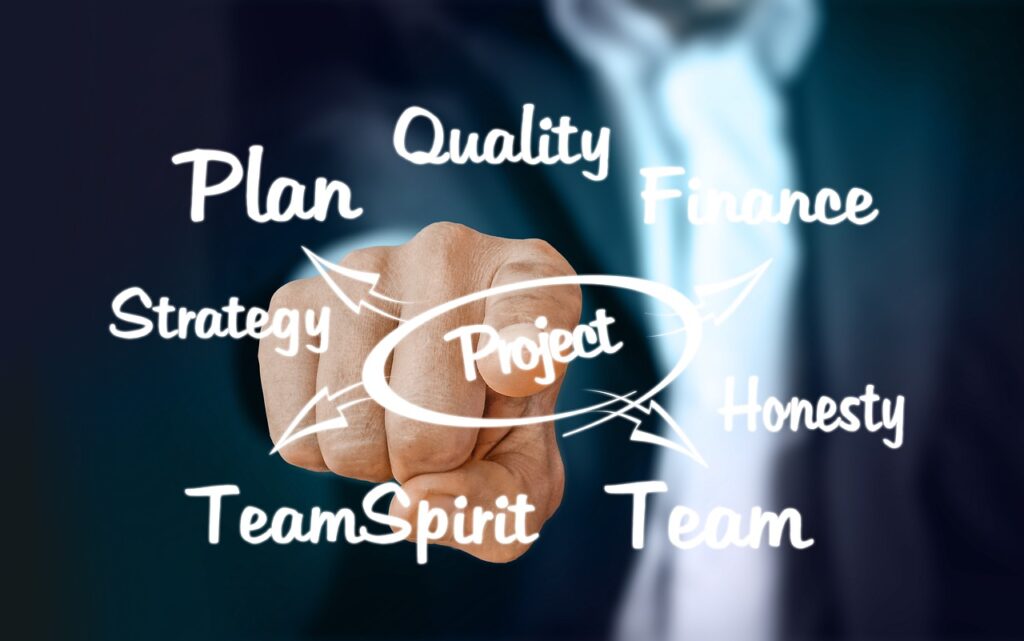Managing time and resources in an agency is a real challenge. A team schedule, built up with the help of management software, ensures coordination and optimal responsiveness to multiple projects. Discover the best practices for designing an efficient schedule, adapted to your team’s rhythm.
Team planning: analyze resources for greater efficiency
Before planning anything, it’s essential to know what resources are available. This means understanding individual workloads, key skills, and specific constraints (part-time work, telecommuting, vacations, etc.).
A good team planning begins with a diagnostic phase. What are the most productive time slots? Who’s working on what? What are the incompressible deadlines? This step enables us to create a realistic distribution that respects human rhythms and limits.
It’s also a good idea to identify periods of high activity (e.g. end of month for balance sheets, campaign launches, customer seasonality) so as to anticipate them and smooth out the workload as much as possible. Planning is a management solution that improves agency tasks and missions.

The benefits of well-constructed team planning
A well-designed team plan doesn’t just improve the structure of your schedule: it also improves team life within theagency. Here are some notable benefits:
- Best project planning: With a clearer definition of tasks and distribution of workloads, everyone knows what they have to do, without feeling overwhelmed.
- Reduced friction: less forgetting, less overlapping, better synchronization.
- Increased visibility: project managers can anticipate delays or adjust resources.
- Reinforced motivation: a structuring framework reassures and enables everyone to concentrate on their tasks.
- Customer satisfaction: rigorous planning ensures on-time delivery and consistent quality.
In short, team planning becomes a management tool management tool that facilitates exchanges and strengthens collective performance.

Effective team planning: practices to adopt
A well-structured team plan should organize the day and support collective performance while preserving individual commitment. For get an efficient agendaThe first step is to clearly define roles and responsibilities. Work/life balance is not a luxury, it’s a lever for efficiency. Involve your employees in the planning process: this encourages buy-in, while revealing the invisible constraints of everyday life.
Remember, too, to take the human dimension into account: a good schedule takes into account breaks, vacations and personal limits, because an exhausted team is never a successful team. Last but not least, keep a strategic margin of maneuver to absorb emergencies without disrupting the rest. There’s no such thing as a perfect schedule, only one that’s alive, evolving and aligned with reality on the ground.
The different types of schedules for agencies
Not all agencies have the same needs in terms of team management. There is no single universal planning template. Here are a few commonly used formats, to be adapted according to context:
- Weekly planning: a fast response time for versatile, agile teams.
- Monthly planning: useful for in-depth projects, marketing campaigns, or longer-term recurring actions.
- Project planning: focused on the key stages of a project, it enables several profiles to be mobilized around the same objective, with precise deadlines.
Automate repetitive tasks to save time
One of the most effective levers for smooth scheduling is thetask automation repetitive. In the agency, many actions are regularly repeated: reminders, sending reports or updating media.
Automating these tasks via tools or directly via the platforms’ internal functions frees up time for higher value-added missions.
- Program a brief to be sent automatically each time a new project is created.
- Update a customer checklist as soon as a project goes into production.
- Create automatic reminders to the team before each meeting or deadline.
These automations prevent oversights, make processes more reliable and, above all, reduce the mental workload associated with micro-tasks.
How do you measure, adjust and improve team planning?
Planning is never perfect the first time. It needs to be alive and adjusted regularly.
To do this, it is useful to monitor a few simple indicators:
- Meeting deadlines
- Perceived workload
- Number of moved or unfinished tasks
- Customer feedback on project fluidity
Organizing end-of-month or end-of-project reviews allows you to take a step back, identify sticking points and adjust methods. It’s also a good time to highlight successes and reinforce team spirit.
The complete ERP solution for simplified scheduling
When it comes to team planning, a comprehensive tool can make all the difference. And that’s exactly what Furious offers. Choose your Best ERP designed for communications agencies, consultancies and DSCs (digital service companies). More than a simple, fluid and precise planning tool, Furious integrates the project management in real time, time tracking, invoicing and even profitability analysis.
The automation of recurring tasks, which frees up precious time on a daily basis, as well as centralized project steering, keep every team member aligned with deadlines. Thanks to its clear dashboards and fluid integrations with tools such as Slack, Teams or Google Workspace, Furious fosters a more agile, transparent and high-performance organization.
Adopting such a tool not only optimizes team planning, but also strengthens team cohesion, while keeping an eye on overall project profitability.
Request your Furious demo today.
